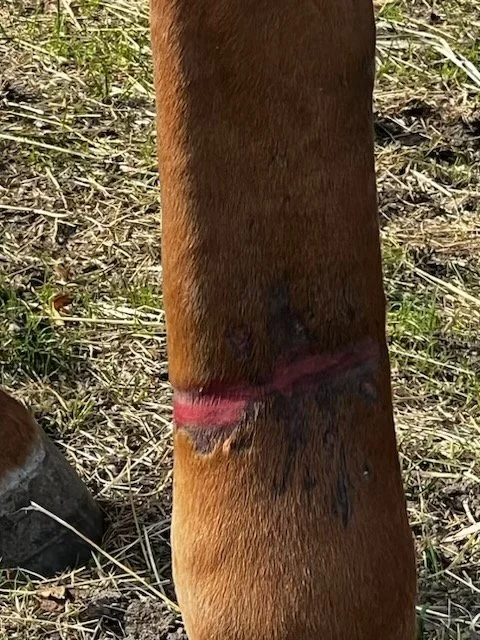The injuries that commonly occur with electric horse tape are deep lacerations, and thermal injuries. Initially the injury may only look small, however the friction trauma that occurs when the tape is pulled across the leg, heats up the underlying tissues, and as time passes, the heated tissue begins to die off. As the tissues dies off there is risk of infection.
Some injuries can affect the deeper tissues which includes the underlying tendons or joints.
If you horse has a fencing injury, firstly, always get some advice. Send us a photo and we can help advise on the best next step.
Next, ensure the injured site is monitored carefully.
Apply appropriate topical treatments; this could include a spray, cream or a bandage.
What to look out for:
Increased swelling
Lameness
Pain on palpation of the area
What we can do:
Manage infection to the tissues
Check for damage to the deeper tissues
Pick the best treatment plan to get your horse recovered as fast as possible.
Our patient showed no pain or lameness, and minimal swelling for the first 3 weeks. Then he became acutely lame and swollen associated with infection. We treated him at our facility, and an ultrasound confirmed no underlying damage to the tendons. Treatments with sodium iodide have helped to reduce the scar tissue which is inevitable with a circumferential wound like this one.

